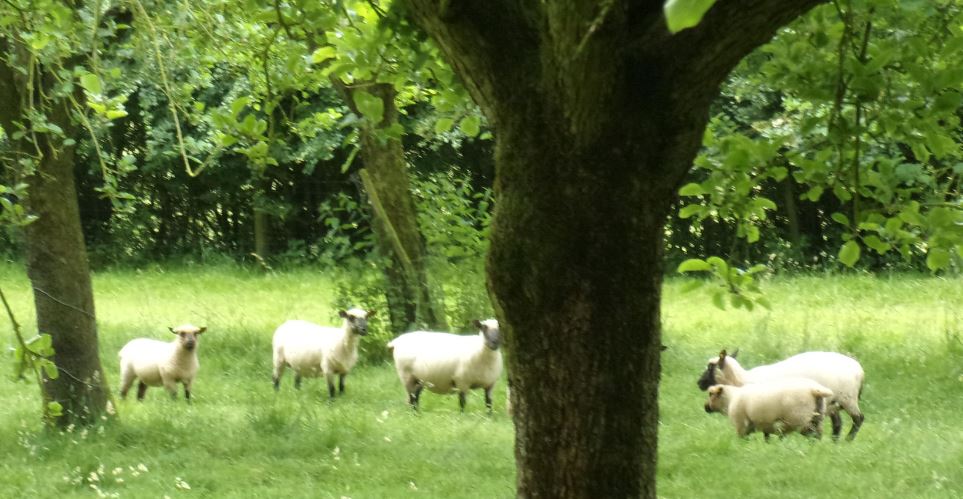
Grazed Orchards in England and Wales
Description of system
In 2012, the total area of apple orchards in England and Wales was recorded as 14,470 ha, with 7,180 ha identified as cider orchards. Including pears, plums, and cherries the total orchard area was 17,620 ha. It is estimated that approximately a quarter are 'traditional orchards' and three-quarters are 'bush orchards'. Traditional orchards are typically formed of open-grown “standard” trees pruned to a height of more than 2 m. Bush orchards typically have a density greater than 600 trees per hectare, and the trees are pruned to a height of less than 1 m (bushes) or 1-2 m (half-standards). All of these orchard types have an understory of grass which needs to be kept short to enable fruit harvest. Grazing is practised in some traditional orchards, but the use of animals in bush orchards is less common.
If you would like to know about the activity of this group, please contact Paul Burgess at Cranfield University.
Initial stakeholder meeting
The 'Grazed Orchards in England and Wales' group had its first meeting in Ledbury, Herefordshire on 9 June 2014 in conjunction with an ‘Innovative Farmers Field Lab’. The meeting was attended by 14 stakeholders, of whom 11 are actively involved in the management of orchards. A key innovation arising from this meeting was the use of Shropshire sheep for grazing orchards, as it is considered that this breed (which is valued for meat production) are 'tree friendly', and can reduce mowing costs.
Download the initial stakeholder report
An initial stakeholder report was produced in July 2014.
Download the initial research and development protocol
A protocol was produced in February 2015.
Download the system description
A system description describing a grazed orchard trial and some initial modelling was produced in April 2016.
Lessons learnt
The stakeholder group in this study had a specific interest in the use of Shropshire sheep, a British lowland sheep breed, for the grazing of orchards. The financial costs and benefits of introducing sheep to a cider apple orchard with half-standard trees (i.e. trees pruned to a height of 1-2 m) was investigated from the perspective of i) a single business including apple and sheep production and ii) two separate businesses of an orchard owner and a sheep breeder. The use of agrochemicals in the studied cider orchard was minimal. The introduction of sheep can reduce orchard mowing costs and provide an additional source of income, but introducing sheep may result in extra fencing and handling costs. Because the sheep must be removed from the orchard for the two months before cider apple harvest, the sheep breeder needs access to additional grazing land. One of the advantages of orchard grazing is that the sheep producer can use this additional grazing land to produce a hay or silage crop when then sheep are in the orchard.
Assuming that there is minimal negative effect on apple yields, orchard grazing can be financially beneficial for a single business. It can also be financially beneficial for an orchard owner and sheep breeder to work together, although transactions costs need to be minimised.